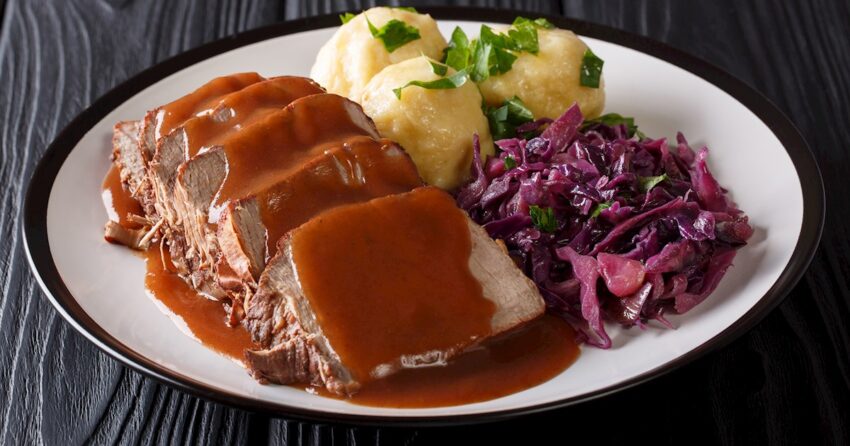Growing up in southern Germany until moving to the U.S. in my mid-20’s, Sauerbraten was a dish I always looked forward to and loved to eat. At times my mom made it and served it with Rotkohl, Knödle or potatoes, or sometimes Spätzle, and it was a memorable feast every time. When we went to a German restaurant here in South Florida, it was also a dish I frequently ordered at restaurants. Wherever we went it was made a little differently with each region having its own variations, but it was always delicious.
This quintessential German dish is found on the menus of many German restaurants both in and outside of Germany. It has been one of Germany’s most popular dishes for generations and as such has become one of its official national dishes.
What is Sauerbraten?
Sauerbraten is a traditional German beef roast that is marinated, browned, and slow-cooked. It is usually marinated in a mixture of vinegar, wine, spices and herbs over the course of several days which tenderizes the meat and infuses it with its characteristic tangy flavor (hence the name sauerbraten, the German word for “sour roast”).
Sauerbraten recipes vary by region, each adding their own touches. Some regions use just vinegar, some just wine and others use a combination of both, which is the most common. There is always the addition of a sweet ingredient to balance the acidity and sourness of the sauce and some regions do this by adding ginger snap cookies, raisins, sugar, honey or sugar beet syrup (or often a combination of them) to achieve that balance. The addition of ginger snaps also serves to thicken the gravy.
Sauerbraten is a dish that definitely requires some advance planning as the roast has to marinate for about a week before it’s ready to cook. Don’t cut corners by shortening the marinating time. Let the meat marinate fully and then reap the rewards for your patience!
There are different variations of this dish and below is a video from YouTube I found:
